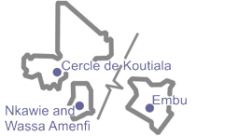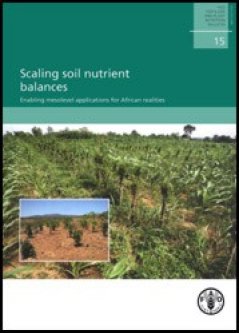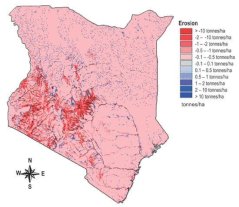
Case Study Ghana, Kenya and Mali
Together with water availability and the absence of weeds, pests and diseases, soil fertility is the most important biophysical yield-determining factor. In the tropics, soils are generally older and poorer than in the Northern Hemisphere. In many places, the already low level of fertility tends to decline further as farmers generate many nutrient outputs in crops and through processes such as leaching and erosion without applying matching inputs in the form of fertilizers, manure and biological nitrogen fixation (BNF).


A country soil-fertility map shows areas with richer and poorer soils, but provides no clues for the mesolevel stakeholder and the farmer. Nor do such maps show diversity at farm level. The present study hypothesizes that between country level (macrolevel) and farm level (microlevel) there is an important mesolevel, where facilitation of production can take place, and where the private sector may invest in a commodity or a production system. Therefore, the evaluation of soil fertility and the manipulation of the nutrient flows, i.e. integrated nutrient management (INM), should take place at three relevant spatial scales, which are also stakeholder-specific scales.
» See FAO publication.
LAPSUS Application
Nutrient input can result from input in sediment as a result of erosion. The input by sedimentation was calculated by the LAPSUS model, which also provided a feedback between nutrient input by sedimentation and -loss by erosion.

The outcome of the model is a net erosion-sedimentation map with units in metres, convertible to tonnes per hectare. It is possible to calculate the loss or gain of nutrients by multiplying by soil nutrient contents and an enrichment factor. The enrichment factor reflects the fact that the finer and more nutrient-rich soil particles will be dislodged earlier during erosion.
Publications
Lesschen, J.P., Asiamah, R.D., Gicheru, P., Kante, S., Stoorvogel, J.J. & Smaling, E.M.A. 2005. Scaling Soil Nutrient Balances - Enabling mesoscale approaches for African realities. FAO fertilizer and plant nutrition bulletin 15. FAO, Rome. View publication.
» more LAPSUS Publications.